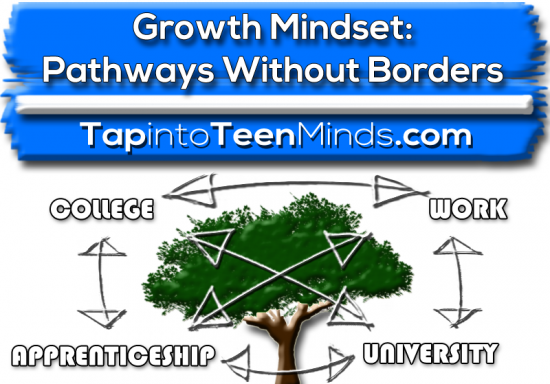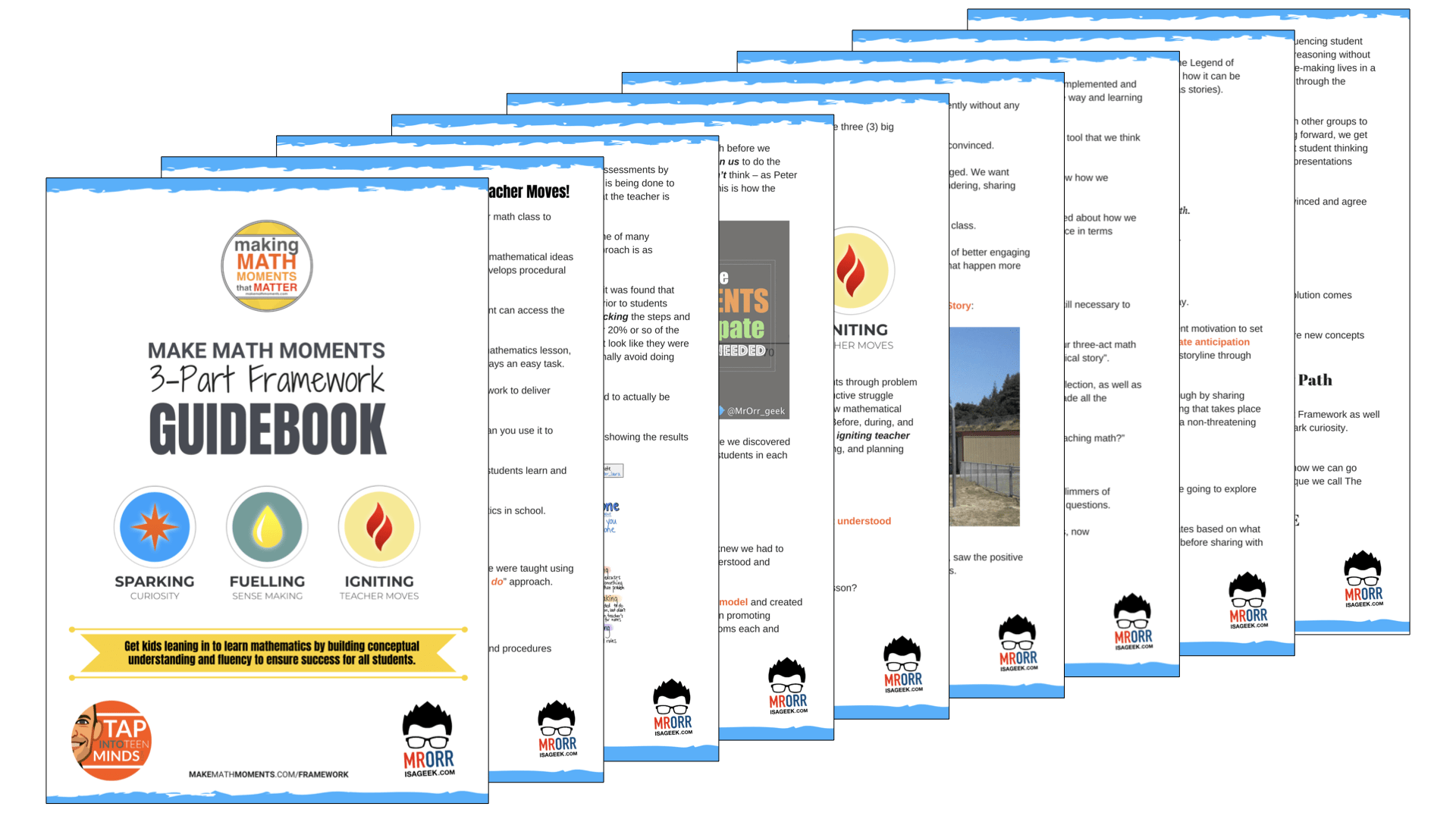
In Ontario, students are required to select their educational pathway as they prepare to enter grade 9 in an attempt to prepare them for the journey to their post-secondary endeavours. While early post-secondary and career planning is essential, these big decisions are also very scary for students and their parents. For many core-subject areas such as Mathematics and English, students can select one of three pathways:
- Locally Developed
- Applied
- Academic
The locally developed pathway leads to mathematics geared for workplace and everyday life, the applied pathway leads to mathematics geared for College and the academic pathway leads to mathematics geared for University. Although the intention is to help students follow a pathway that ultimately leads to their most desired post-secondary destination, often times pathways are selected based on ability rather than passion. With course selection taking place at around the midpoint of grade 8, students who still have bedtimes and can’t drive a car are entrusted to make decisions that will impact the next 40 years of their lives.
Promoting a Growth Mindset in Education
I am a firm believer that “all students can succeed given adequate time and support” as so many school boards have written in their belief statements. Unfortunately, I believe that the interpretation by students and their parents is that pathways other than the academic/university pathway create a ceiling restricting the learner from maximizing their potential and encouraging a fixed mindset. Carol Dweck, the Standford University researcher in psychology and author of Mindset: The New Psychology For Success claims that talent isn’t fixed and that:
most basic abilities can be developed through dedication and hard work — brains and talent are just the starting point.
I think the piece that is so important to note here is the starting point. In the North American education system, students are expected to progress along their educational journey at the same pace regardless of their own starting point. If you are not successful in primary mathematics for example, students are identified as not being very “good” in the subject area and they forever live with this misconception. Dweck identifies some useful language to promote a growth mindset when providing feedback in an interview with 99u including her love for the word “yet” –
… I’ve also fallen in love with a new word — “yet.” You can say to someone who fell short: “You don’t seem to have this,” but then add the word “yet.” As in, “You don’t seem to have these skills…yet.” By doing that, we give people a time perspective. It creates the idea of learning over time. It puts the other person on that learning curve and says, “Well, maybe you’re not at the finish line but you’re on that learning curve and let’s go further.” It’s such a growth mindset word.
Talent Isn’t Fixed and Other Mindsets That Lead to Greatness – 99u.com
Can Selecting Pathways Promote a Growth Mindset?
With our current pathways model, I wonder whether we can truly promote students learning with a growth mindset when they are required to select a pathway that will shut the door on certain opportunities. In many cases, students have learned with a fixed mindset for so long over the 8 years of elementary that they select the pathway that will allow them to experience success with minimal effort. Once their pathway is selected, most continue along their journey without attempting to truly learn and grow.
Encouraging Pathways Without Borders
What if…
- Students could stretch beyond the learning goals of an applied course to receive an academic credit?
- Students in an academic course wasn’t able to meet a minimum number of learning goals, but could receive an applied credit due to their ability to meet the learning goals of that course?
- Students could select a pathway, but not feel confined to that pathway?
- Students were consistently pushed to maximize their learning in school?
Would it encourage a student growth mindset?
I’d like to believe it would. Removing the borders of pathways, like removing the air-filled bumpers from the bowling lane that keeps the ball from ever going in the gutter, allows students to challenge themselves to grow and still encourage student success if they reach too high, too fast. Attempting to implement a system like this would be difficult. The planning, organization and execution would require rules to change and leaders willing to stretch their necks out to ensure our students are as successful as possible.
The real challenge comes down to whether our educational leaders have the growth mindset to change our current pathways model to something truly differentiated for each individual student.
WANT TO LEARN HOW TO TEACH THROUGH TASK?

Share With Your Learning Community:

About Kyle Pearce
I’m Kyle Pearce and I am a former high school math teacher. I’m now the K-12 Mathematics Consultant with the Greater Essex County District School Board, where I uncover creative ways to spark curiosity and fuel sense making in mathematics. Read more.
Read More From The Blog

My least favorite comment from a student is the type you’ve described above. They would say something like “I’m not good at history.” I barely know what to so when they’ve given up on a skill that doesn’t even exist. History isn’t something to be bad at. It’s the power of a mindset, though, that we’ve inadvertently taught them that does this.
I love Dweck’s work and ideas. My own children know we only talk about ourselves within a “yet” framework in our house. In far too many American schools, we are tracking kids in a way that become entirely too inflexible, leaving them doomed to the track their in starting long before they know whom they can become, long before we may even realize. We must find early curriculum and psychological approaches that allow all student to live and learn with “yet” at the forefront of their approach to anything. The earlier we start, the better off the students will be and the easier we, as educators and parents, will have it when trying to push our children.
Completely agree, David.
Students are pegged so early and compared to everyone else when we are supposedly “unique.” Unfortunately there are no easy answers when it comes to a solution, but I do think we need to promote students re-addressing learning goals rather than simply moving on and allowing students to be content with not learning a skill.
Providing multiple opportunities for students to achieve throughout courses is so important. Even more so would be teachers ensuring students use the multiple opportunities and provide enough support to encourage improvement.
Thanks for stopping by!
If you like Dweck and Boler’s work on growth mindset then you might be interested in taking part in their research. Check it out here http://www.perts.net/home/orientation/cp2.php
Thanks for sharing and nice seeing you on Thursday/Friday at SIM in London!